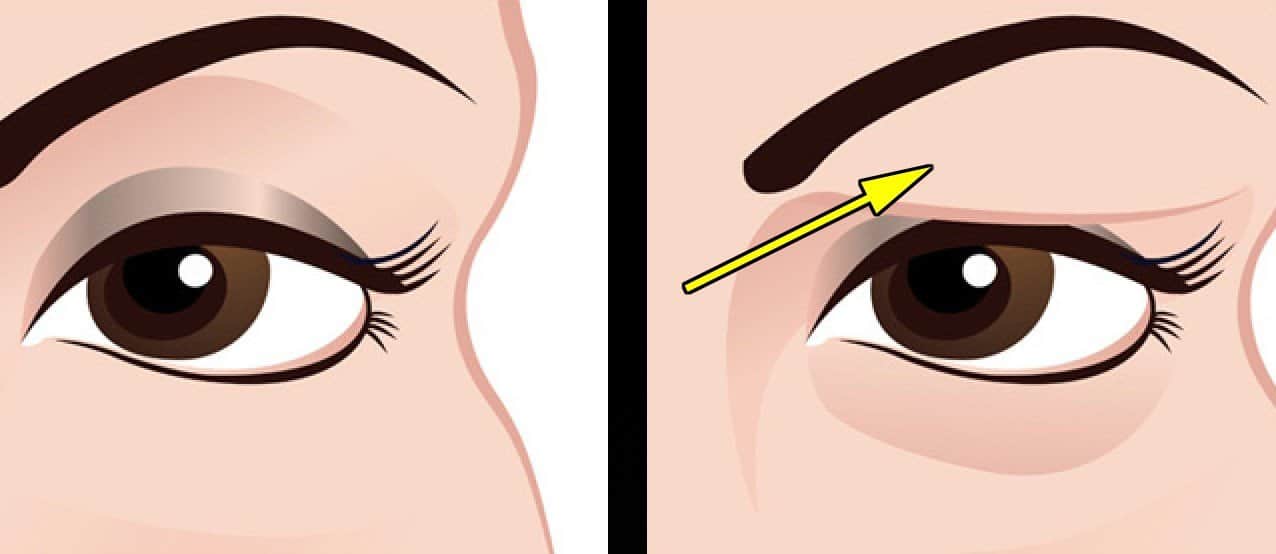We commonly associate sagging eyelids with a tired appearance, but these drooping eyes, medically known as ptosis, can indicate more than just fatigue. Ptosis can result from various causes, including age, trauma, or underlying medical disorders. As ophthalmologists and oculoplastic surgeons, our focus is to evaluate and diagnose these conditions through a complete eye exam, ensuring that any underlying issues are addressed.
It’s essential to understand that sagging eyelids can manifest in different ways. Some individuals may experience temporary drooping, while others have a more persistent condition. Our role as eye doctors is to collaborate with medical professionals, such as plastic surgeons, to provide a comprehensive understanding of each patient’s unique situation through a thorough examination, including both eye and physical exams. This approach facilitates an accurate diagnosis and, ultimately, a more effective treatment plan.
Chapter Overview
Who Can Get Sagging Eyes?
Anyone can experience sagging eyes, regardless of gender or ethnicity. The most common cause is the natural aging process, as the levator muscle responsible for lifting the eyelid can stretch and weaken over time. However, sometimes the exact cause remains unknown or is related to trauma or neurological issues.
There are a variety of medical conditions and other factors that may increase the risk of developing sagging eyes:
- Age: As we mentioned, aging is the primary cause of sagging eyes.
- Congenital ptosis: Some individuals are born with a droopy eyelid.
- Acquired ptosis: This occurs later in life and may be caused by trauma, infection, or medical history.
Several health conditions and risks can also contribute to sagging eyes:
- Stroke: Interruptions in blood flow to the brain may cause eyelids to droop.
- Tumors: Brain tumors can cause neurological problems, leading to sagging eyes.
- Myasthenia gravis: This autoimmune disease affects muscle strength and can result in drooping eyelids.
- Diabetes: High blood sugar levels can damage nerves, which may affect eye muscles.
- Third nerve palsy: A complication from head injuries, inflammation, or tumors can lead to sagging eyes.
- Multiple sclerosis: This neurological disorder can weaken eye muscles and cause drooping.
Sagging eyes may impact self-esteem and eye health, so it’s essential to consult a healthcare professional for proper diagnosis and treatment options.
What Are The Symptoms of Sagging Eyes?
Sagging eyes, or ptosis, presents several noticeable symptoms:
- Droopy eyelids: One or both of the upper eyelids may sag, potentially affecting vision.
- Impaired vision: Difficulty in performing daily activities, such as reading or driving, due to vision loss or double vision.
- Discomfort: Dry eyes, watery eyes, eye pain, or aching around the eyes.
- Appearance: Tired or weary facial expression, excess skin, or wrinkles near the eyes.
- Physical strain: Fatigue, headaches, or raising eyebrows to help with vision.
These symptoms can result from muscle weakness, nerve injury, or excess skin.
7 Natural Remedies For Drooping Eyelids

Chamomile Tea Bags

Chamomile tea has anti-inflammatory properties that can help soothe the skin around the eyes and treat drooping eyelids. To use this remedy, simply brew chamomile tea, let the tea bags cool down, and then place them on your eyes for 10 to 20 minutes. If you’d like an extra cooling effect, refrigerate the tea bags before using them.
Egg Whites

Egg whites can help tighten the skin around your eyes and strengthen the muscles that support your eyelids. Before applying egg whites, cleanse and dry your skin. Then, apply a small amount to your eyelids and let it dry on its own. Wash off with cool water for an almost instant result.
Ice

Ice helps constrict blood vessels and reduce the appearance of sagging eyelids. To use this remedy, simply apply ice cubes to your eyelids. If you don’t have ice cubes available, try using frozen vegetables as an alternative.
Cucumbers

Cucumbers are a classic remedy for skin issues. They contain caffeic acid and ascorbic acid, which help reduce inflammation and tighten skin. To use cucumbers for drooping eyelids, place two chilled cucumber slices over your eyes for 15 minutes, making sure to wash your face before and after treatment.
Grapes

Grapes are rich in antioxidants and other nutrients that can prevent or slow down the cellular aging process. To benefit from their properties, simply consume grapes regularly.
Exercise

There are exercises designed specifically to strengthen the muscles of your eyelids. Close your eyes and place your index fingers across each eyelid. Lift your eyebrows and count to five, applying gentle pressure to the eyelids for each count. Attempt to open your eyes while maintaining the pressure. Repeat this exercise ten times.
Sleep Well

Sleep is a crucial factor in preventing and diminishing drooping eyelids. When you don’t sleep well, stress increases, and your eyelids appear tired. Make sure to maintain a consistent sleep schedule and aim for 6 to 8 hours of sleep per day.

